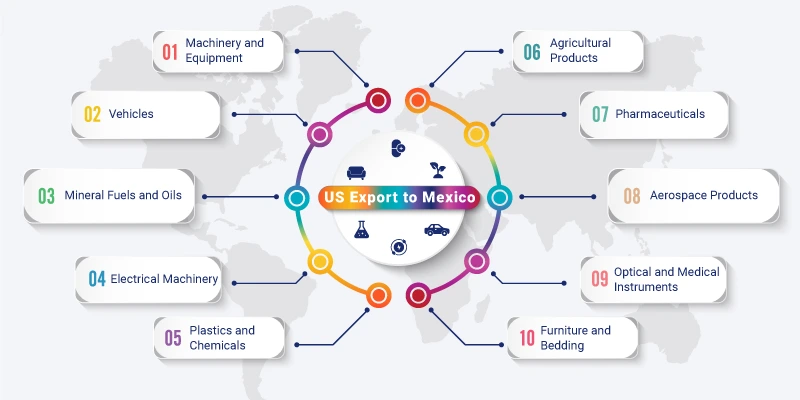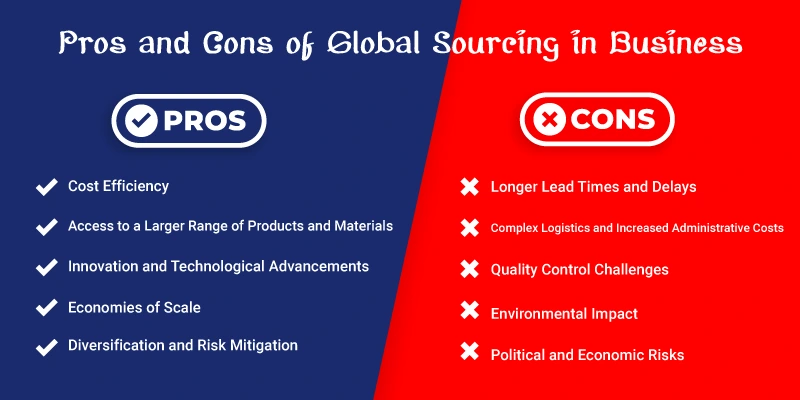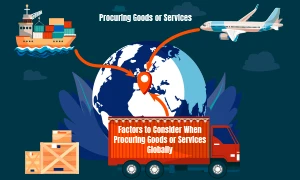
Sourcing materials and services significantly impacts the sustainability, cost, and efficiency of a project. The debate between local sourcing and global sourcing has gained prominence as businesses strive to balance quality, cost-effectiveness, and environmental responsibility. Local Sourcing involves procuring materials and services from suppliers in close proximity to the project site. On the other hand, Global Sourcing allows businesses to tap into international markets, providing access to a wider variety of materials and specialized products that might not be available locally. A blended approach that combines the strengths of both strategies can often yield the most balanced, efficient, and sustainable outcomes.
Let’s explore both sides of the sourcing debate to help you make an informed choice for your business.
What is Local Sourcing?
Local sourcing refers to purchasing goods or services from suppliers who are geographically close to your business. This can mean sourcing from local farmers, manufacturers, or service providers within your region or country. The defining feature of local sourcing is proximity — the supplier is near enough to reduce transportation times and costs.
Read More: Sourcing Companies: What They Do and Why They Matter
Pros and Cons of Local Sourcing in Business
When considering sourcing strategies, businesses must weigh the benefits and challenges of choosing between local and global suppliers. Local sourcing, in particular, offers several advantages, but it also comes with its own set of limitations that need careful consideration.

| Advantages of Local Sourcing | Disadvantages of Local Sourcing |
|---|---|
| Faster Delivery Times and Greater Flexibility: With suppliers nearby, delivery times are significantly reduced. Businesses can also place smaller, more frequent orders, offering greater flexibility to adjust to market changes. | Limited Availability and Product Variety: Local suppliers might not provide the same range of specialized materials or products available through global sources, limiting options for unique project requirements. |
| Lower Transportation Costs: Shorter shipping distances mean reduced transportation costs, making local sourcing a more cost-effective option. | Higher Costs: Labor and production costs in developed regions can be higher, making locally sourced goods potentially more expensive and affecting overall profit margins. |
| Support for Local Economies: By sourcing locally, businesses stimulate the local economy, create jobs, and foster positive community relationships, which can enhance brand reputation. | |
| Quality Control and Transparency: Being close to suppliers allows businesses to closely monitor product quality and make quick adjustments, ensuring higher standards. | |
| Reduced Risk of Supply Chain Disruptions: Local sourcing minimizes the risk of delays caused by international shipping issues such as customs, tariffs, and political instability. |
Read More: Low Cost Country Sourcing
What is Global Sourcing?
Global sourcing, on the other hand, involves purchasing products or materials from suppliers located in other countries. Companies that engage in global sourcing aim to access the best products at the lowest possible prices, even if that means buying from suppliers across the globe. In global sourcing, businesses often seek out suppliers from regions with lower labor costs, advanced technologies, or specialized resources.
Pros and Cons of Global Sourcing in Business
Global sourcing can offer significant advantages, such as cost savings, access to a wider range of products, and technological innovations. However, it also presents challenges, including longer lead times, quality control issues, and environmental concerns.

| Advantages of Global Sourcing | Disadvantages of Global Sourcing |
|---|---|
| Cost Efficiency: Global sourcing helps businesses reduce costs by taking advantage of lower labor costs in countries like China, India, or Vietnam. This allows for lower-priced products and savings that can benefit consumers or be reinvested in the business. | Longer Lead Times and Delays: Shipping goods from overseas takes longer, and customs or port congestion can cause delays, affecting production schedules and delivery times. |
| Access to a Larger Range of Products and Materials: Businesses can access a wider variety of products, materials, and specialized expertise not available locally, enhancing product offerings and capabilities. | Complex Logistics and Increased Administrative Costs: Managing a global supply chain is complicated due to different regulations, taxes, and compliance requirements, resulting in higher administrative costs. |
| Innovation and Technological Advancements: Global suppliers may provide access to cutting-edge technologies, advanced manufacturing processes, and specialized knowledge to improve products and operations. | Quality Control Challenges: Ensuring product quality can be more difficult due to time zone differences, language barriers, and distance, leading to potential miscommunications or quality issues. |
| Economies of Scale: Larger global suppliers can offer economies of scale, producing goods in greater volumes and reducing unit prices, benefiting companies requiring large quantities of materials. | Environmental Impact: Increased transportation distances from global suppliers raise the company’s carbon footprint due to higher emissions from air and sea freight. |
| Diversification and Risk Mitigation: Sourcing from multiple global suppliers diversifies the supply chain, reducing the risk of disruptions caused by natural disasters, political instability, or supply shortages in a single region. | Political and Economic Risks: Sourcing from countries with unstable political environments or fluctuating economic conditions exposes businesses to risks like trade wars, sanctions, or policy changes that can disrupt supply chains. |
Why Companies Are Choosing Global Sourcing Over Local Options
Global sourcing has become a key strategy for companies seeking to enhance their market competitiveness and expand their global presence. While local sourcing offers numerous advantages, businesses are increasingly turning to global procurement for its cost efficiency, access to better resources, market expansion, and risk management benefits. This strategy enables companies to leverage economies of scale, gain access to specialized expertise, and adapt quickly to changing market conditions.
Cost Savings: The Power of Global Sourcing
One of the primary reasons businesses opt for global sourcing is the significant cost savings it offers. Countries in regions like Asia, Latin America, and Eastern Europe are known for their lower labor costs. By tapping into these regions, companies can drastically reduce production costs, enabling them to offer competitive pricing in their markets. Global sourcing also allows businesses to leverage economies of scale. By purchasing large quantities of materials, they can lower per-unit costs and increase their bargaining power with suppliers. This results in substantial savings across their entire supply chain.
Example: Nike
Nike, a leading global brand, sources its products from countries like China, Vietnam, and Indonesia. Through global sourcing, Nike benefits from low labor costs, enabling them to produce high-quality products at competitive prices.
Access to Quality Resources: Diverse Supplier Base and Expertise
Global sourcing also provides access to a diverse range of suppliers, each offering unique capabilities and strengths. This diversity allows companies to select the best suppliers based on factors like quality, reliability, and innovation. In addition, certain regions specialize in specific industries, making them the ideal source for cutting-edge technology and high-quality materials.
Example: Apple
Apple sources components from countries such as South Korea, Japan, and Taiwan, known for their expertise in semiconductors and advanced technology. By partnering with these global suppliers, Apple ensures that its products meet the highest standards for quality and innovation.
Expanding Market Reach: Growing Your Global Footprint
Global sourcing offers companies the ability to expand into new markets and grow their global footprint. By operating in multiple countries, businesses can better understand and cater to local markets, driving brand recognition and customer loyalty. This international presence often enhances a company's image, making it appear more reliable and prestigious in the eyes of consumers.
Example: Starbucks.
Starbucks sources coffee beans from various countries around the world, including Colombia, Ethiopia, and Indonesia. This strategy not only provides access to diverse, high-quality coffee but also positions Starbucks as a global leader in premium coffee, boosting its brand recognition globally.
Minimizing Risks: A Resilient Supply Chain Through Global Sourcing
Global sourcing allows companies to diversify their supply chains, reducing the risks associated with relying on a single source or region. By working with multiple suppliers across different geographies, businesses can protect themselves from disruptions caused by factors like natural disasters, political instability, or economic downturns. Moreover, global sourcing provides the flexibility to quickly adapt to changing market conditions, ensuring that production remains consistent and customer demands are met.
Example: Toyota.
Toyota uses an international sourcing strategy to create a resilient supply chain. By sourcing parts from various regions, Toyota can quickly shift production in response to disruptions, minimizing the impact on its operations.
Technological Advancements and Innovation
Global sourcing enables companies to tap into global innovation hubs, such as Silicon Valley, Shenzhen, and Tokyo, where groundbreaking technological advancements are taking place. By collaborating with international suppliers in these regions, businesses can stay at the forefront of technological developments, enhancing their competitive edge. Moreover, global sourcing fosters collaborative innovation, allowing businesses to share knowledge and co-develop new products and services.
Example: General Electric (GE)
General Electric works with suppliers and research institutions around the world to drive innovation in its products and services. This global approach to sourcing and collaboration allows GE to maintain its position as a leader in multiple industries.
Must see: Factors To Consider When Procuring Goods Or Services Globally
Deciding whether to source locally or globally depends on several factors, including your business’s goals, budget, product requirements, and market needs. Many businesses adopt a hybrid model, combining both local and global sourcing to balance cost, quality, speed, and risk. This approach allows companies to maximize the strengths of both strategies, depending on the specific product or material in question.
Optimize Your Sourcing Strategy: How SIXM Can Help You Stay Ahead
At SIXM, we believe that a well-informed sourcing strategy can drive both sustainability and efficiency. Whether you lean towards local or global sourcing, we are here to guide you through making the best decision for your business. Through our Sourcing & Procurement Engineering Services, we help businesses optimize their procurement processes, ensuring cost-effectiveness and quality. Let us assist you in staying ahead in an ever-evolving market with tailored solutions that meet your unique needs.

